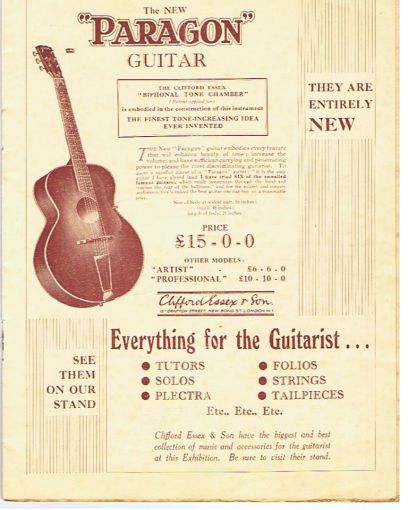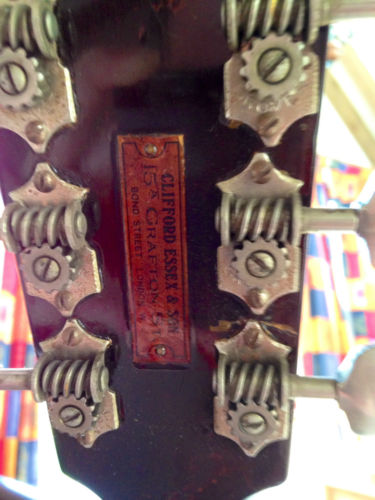Circa 1930 Essex Paragon
I really wish these photos were better because this is a very interesting instrument. What we have here is an Essex Paragon, a very nice guitar that was made in England around 1930. Clifford Essex was a banjo player who started selling banjos in 1893. At first he had other companies make his instruments for him but in 1904 he opened his own workshop and started making his own banjos. Essex also published the magazine BMG, which stood for Banjo, Mandolin, Guitar, so he really had his finger on the pulse of what Britain’s fretted instrument players wanted. And, in the late 1920s, he found that those players really wanted guitars.
Sometime around 1927 Essex hired a young luthier named Marco Roccia, an Englishman of Italian descent, to help build guitars in the banjo workshop. Although we’re not 100% sure that Roccia made this guitar, it does appear that he worked on most of the guitars that came out of the Essex shop. Roccia continued to work at the Clifford Essex shop until they closed in 1977. During that time he earned a reputation as one of England’s finest luthiers as well as becoming an excellent repairman. He also had a sideline of converting four-string Selmer Eddie Freeman models into six-string guitars. (Here’s an nice unconverted Eddie Freeman.)
This guitar was made sometime around 1930 and from the look of it, it was inspired by Gibson’s late 1920s L-4, a roundhole archtop that I think is one of the most underrated guitars out there. I haven’t played one of these early Paragons but I have had my hands on one from the 1940s, one with a slightly different body shape. I thought it was a really good sounding guitar. It looks like this one has seen some hard use over the years, the former owner was a working musician, and it’s had some extensive restoration over the years. The guitar was starting bid of .99 pence, about $1.67 with a Buy It Now price of £850 or about $1415.
Click here for the eBay listing.
Scroll down to the bottom see a clip of Vic Flick playing his Clifford Essex Paragon Deluxe, an f-hole version of this guitar, on perhaps the most famous guitar riff of all time.
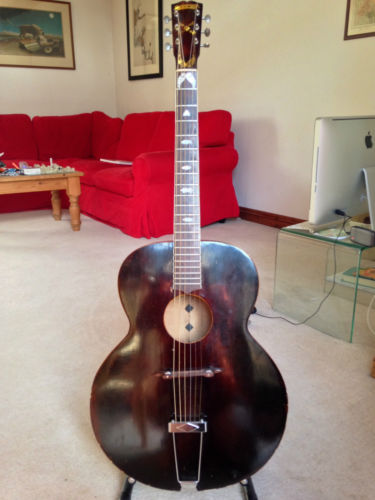
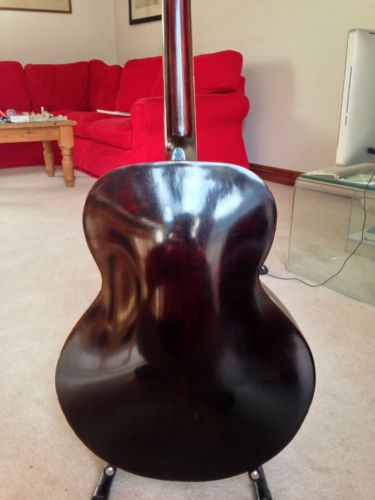
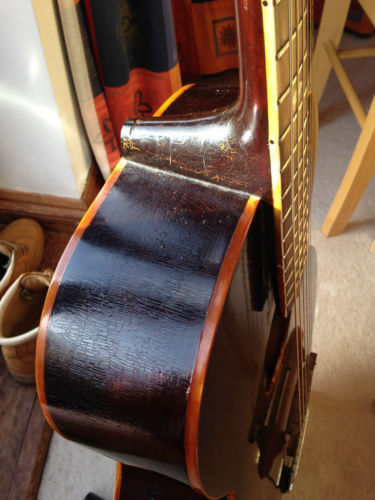
An ad from 1934 touting the Paragon’s virtues. The £15 is worth around £882 in today’s currency or about $1470. A six-string Selmer from around the same period was priced at £17 17s 0d. (That’s 17 pounds, 17 shillings and no pence.) That’s £1050 or $1750 in today’s currency.
